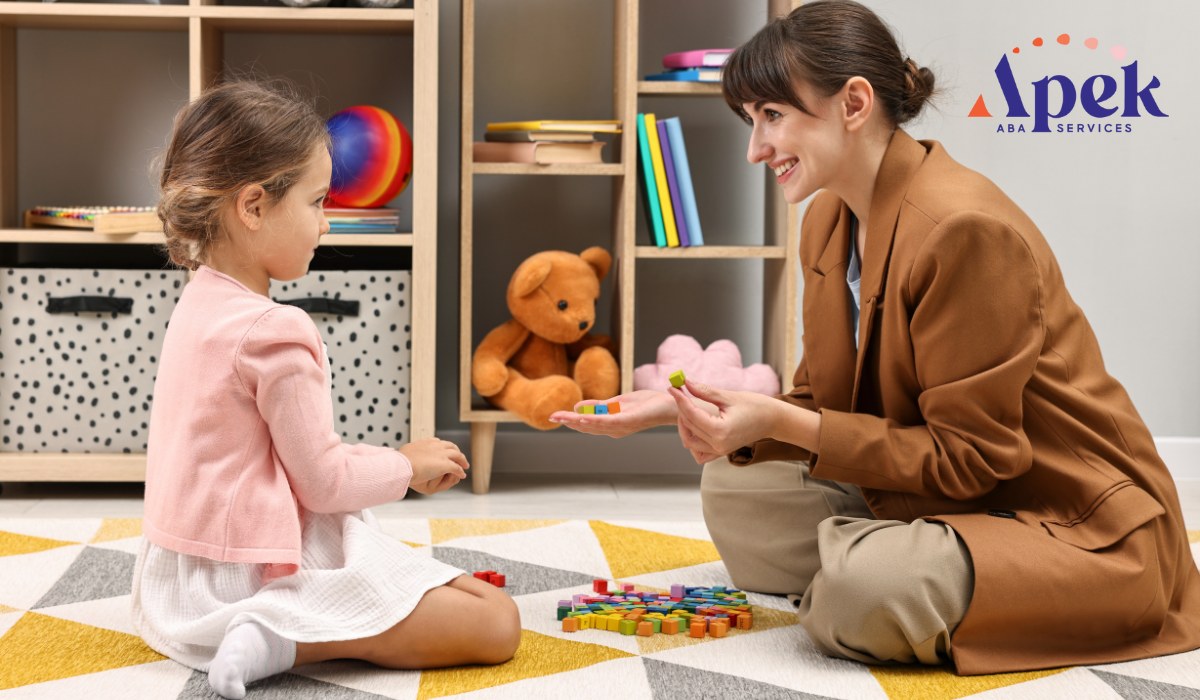Key Points:
- Errorless teaching in ABA helps children learn new skills with minimal frustration by reducing mistakes.
- Parents can apply practical strategies at home to reinforce learning through guided prompts and structured routines.
- Combining errorless teaching with ABA therapy supports consistent progress and builds confidence in children.
Learning new skills can be challenging for children, especially those on the autism spectrum. Mistakes are a natural part of learning, but frequent errors can sometimes lead to frustration, decreased motivation, or avoidance of tasks. Errorless teaching is an ABA (Applied Behavior Analysis) strategy designed to minimize these hurdles, helping children learn confidently while reducing mistakes.
For parents, implementing errorless teaching at home might sound technical, but it’s more approachable than it seems. By carefully structuring prompts, breaking down tasks, and providing timely reinforcement, parents can turn everyday routines into opportunities for learning.
What is Errorless Teaching?
Errorless teaching is a method within ABA that ensures children are set up to succeed from the start. Instead of letting a child make multiple attempts—and potentially errors—this technique provides the right level of guidance and support to prevent mistakes.
The primary goals of errorless teaching include:
- Reducing frustration: Children are less likely to feel discouraged if they experience success early.
- Building confidence: Successful experiences encourage motivation and persistence.
- Promoting correct responses: Fewer mistakes mean the child learns the right behavior more consistently.
This approach doesn’t remove the challenge entirely; it scaffolds learning so children can gradually move from guided responses to independent skills.
How Errorless Teaching Works in Practice
At home, parents can implement errorless teaching by structuring learning in ways that make success almost certain. Here’s a breakdown of the core elements:
1. Use Prompting Strategically
Prompts are cues that guide a child toward the correct response. There are several types of prompts:
- Physical prompts: Hand-over-hand assistance to help a child complete a task.
- Verbal prompts: Clear instructions or hints that guide the child’s action.
- Visual prompts: Pictures, icons, or written cues that provide guidance.
The key is to start with stronger prompts and gradually fade them as the child gains confidence. For example, if teaching a child to identify colors, you might first point to the correct color while naming it, then fade your gesture until the child can respond independently.
2. Break Tasks Into Small Steps
Large tasks can overwhelm children. Errorless teaching emphasizes breaking complex skills into manageable steps.
Example: Teaching a child to brush their teeth:
- Pick up the toothbrush.
- Apply toothpaste.
- Brush top teeth.
- Brush bottom teeth.
- Rinse and put the toothbrush away.
By focusing on one step at a time and ensuring success at each stage, the child experiences consistent wins, reinforcing motivation and learning.
3. Provide Immediate Reinforcement
Reinforcement is a cornerstone of ABA therapy. In errorless teaching, immediate feedback—whether praise, a favorite toy, or small treat—helps the child connect the correct action with a positive outcome.
Tip: Always deliver reinforcement right after the correct response. This timing strengthens the behavior and encourages repetition.

Practical Errorless Teaching Activities at Home
Errorless teaching can be incorporated into daily routines without needing specialized equipment. Here are several ideas parents can try:
1. Sorting and Matching Games
- Activity: Use colored blocks or cards to teach color or shape recognition.
- Errorless Tip: Begin by guiding your child’s hand to the correct match and gradually reduce assistance.
- Benefit: Teaches cognitive skills while minimizing mistakes, boosting confidence.
2. Simple Chores
- Activity: Tasks like putting toys away or setting the table.
- Errorless Tip: Model the action first, then assist if necessary. Gradually fade prompts until the child completes the task independently.
- Benefit: Encourages independence and responsibility in a low-pressure environment.
3. Daily Routines
- Activity: Morning routines like brushing teeth, washing hands, or getting dressed.
- Errorless Tip: Break each routine into micro-steps, guide at first, and fade support.
- Benefit: Combines life skills practice with structured learning for predictable success.
4. Language and Communication Skills
- Activity: Teaching new words, phrases, or social greetings.
- Errorless Tip: Present the correct response visually or verbally before asking the child to respond. Use prompts that gradually fade over time.
- Benefit: Reduces frustration associated with communication attempts and encourages verbal or gestural expression.
Tips to Maintain Motivation and Engagement
Errorless teaching is most effective when children are motivated and engaged. Parents can reinforce learning by:
- Using high-interest materials: Select toys or items your child enjoys.
- Changing activities frequently: Short, varied sessions prevent boredom.
- Offering choices: Allow children to select tasks or order of activities to promote autonomy.
- Celebrating success: Even small achievements deserve recognition.
By keeping sessions positive and dynamic, children remain eager to participate and learn.

Common Mistakes to Avoid in Errorless Teaching
Even with the best intentions, some strategies can unintentionally reduce the effectiveness of errorless teaching:
- Over-prompting: Giving too much help can prevent independence.
- Skipping reinforcement: Delayed or inconsistent rewards reduce motivation.
- Rushing steps: Moving too quickly can lead to errors and frustration.
- Ignoring individual learning pace: Every child progresses differently—personalization is key.
Being mindful of these pitfalls ensures that errorless teaching remains a supportive and effective learning tool.
How ABA Therapy Supports Errorless Teaching
Errorless teaching is most powerful when integrated with structured ABA therapy. ABA therapists assess the child’s current skills, design individualized learning plans, and provide guidance for parents to implement strategies at home.
Through ABA, children:
- Learn behaviors systematically using consistent reinforcement.
- Acquire social, communication, and functional skills with reduced frustration.
- Transition smoothly from guided tasks to independent completion.
Therapists apply these methods in therapy sessions, ensuring that errorless teaching principles are tailored to each child’s strengths and needs. Families often see faster progress and increased confidence in daily activities when ABA principles are used consistently both in therapy and at home.

Measuring Progress and Adjusting Techniques
To maximize effectiveness, parents should track progress and adapt strategies:
- Keep a simple journal: Record successes, prompt levels, and reinforcement types.
- Note fading readiness: Gradually reduce prompts when the child demonstrates consistency.
- Adjust reinforcement: Shift from tangible rewards to social praise or natural outcomes over time.
- Collaborate with therapists: Share observations with your ABA provider to fine-tune approaches.
Monitoring progress ensures that children continue learning at an optimal pace without unnecessary frustration.
Final Thoughts: Bringing Errorless Teaching Into Everyday Life
Errorless teaching transforms everyday interactions into meaningful learning opportunities. From sorting toys to brushing teeth, these strategies reduce errors, increase confidence, and support skill mastery. By combining these techniques with ABA therapy, children can experience structured learning that feels rewarding, not stressful.
At Apek ABA, our programs incorporate errorless teaching to help children thrive in both structured sessions and everyday life. Parents can access tailored ABA therapy in Georgia and ABA therapy in Virginia that builds confidence, promotes independence, and encourages consistent progress.
If you’re ready to bring practical, evidence-based strategies into your child’s daily routine, get in touch with us today to learn how our team can support your family every step of the way.

